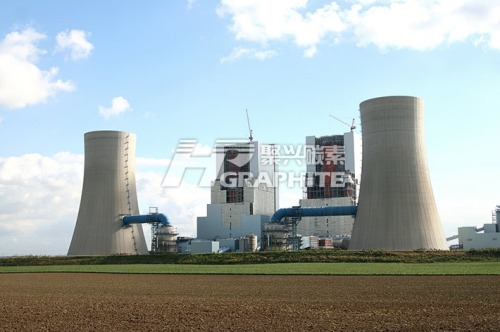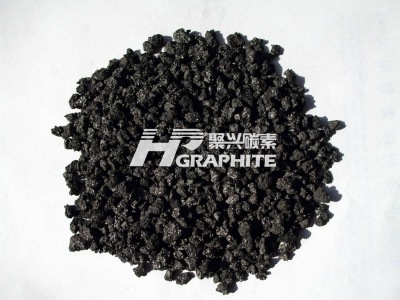【Petroleum Coke】Quality Requirements for Petroleum Coke Used in Aluminum Carbon Anodes

【Petroleum Coke】Quality Requirements for Petroleum Coke Used in Aluminum Carbon Anodes
With the rapid development of China's electrolytic aluminum industry, the aluminum pre-baked anode industry has become a new investment hot spot. As the main raw material for pre-baked anodes, the various indicators of petroleum coke will have a certain impact on the quality of the product.
Sulfur Content
The sulfur content in petroleum coke mainly depends on the quality of the crude oil. Generally, when the sulfur content in petroleum coke is relatively low, the consumption of anodes decreases as the sulfur content increases because sulfur increases the coking rate of pitch and reduces the porosity of coked pitch. At the same time, sulfur also combines with metal impurities, reducing their catalytic effect and inhibiting the reactivity of carbon anodes to CO2 and air. However, if the sulfur content is too high, it will increase the thermal brittleness of carbon anodes. Moreover, since sulfur mainly turns into gas in the form of oxides during electrolysis, it seriously affects the electrolytic environment, resulting in great environmental pressure. In addition, it may generate a thin film of iron sulfide on the anode rod, increasing the voltage drop. With the increasing import of crude oil and the continuous improvement of processing methods in China, the trend of deteriorating quality of petroleum coke is inevitable. In order to adapt to changes in raw materials, pre-baked anode production enterprises and electrolytic aluminum industry have carried out a lot of technical transformation and technical research. According to the survey of domestic pre-baked anode production enterprises, petroleum coke with a sulfur content of about 3% can generally be directly calcined.
Trace Elements
The trace elements in petroleum coke mainly include Fe, Ca, V, Na, Si, Ni, P, Al, Pb, etc. Since the composition and content of trace elements vary greatly depending on the oil source of the refining manufacturer, some trace elements are introduced from crude oil, such as S and V, while others are introduced during crude oil mining. In addition, a part of alkali and alkaline earth metals is introduced during processing, and some ash content such as Si, Fe, Ca, etc. is increased during transportation and storage. The content of trace elements in petroleum coke directly affects the service life of pre-baked anodes and the quality and grade of electrolytic aluminum products. Ca, V, Na, Ni, and other elements have a strong catalytic effect on the anode oxidation reaction, which promotes the selective oxidation of the anode, causing the anode to drop slag and block and increasing the excessive consumption of the anode. Si and Fe mainly affect the quality of the original aluminum, among which an increase in Si content will increase the hardness of aluminum and decrease its conductivity, while an increase in Fe content will have a great influence on the plasticity and corrosion resistance of aluminum alloys. Based on the actual requirements of production enterprises and users, the content of trace elements such as Fe, Ca, V, Na, Si, Ni, etc. in petroleum coke is limited.

Volatile Matter
The high volatile matter content in petroleum coke indicates that there is more uncoked part carried in it. If the volatile matter content is too high, it will affect the true density of calcined coke, reduce the yield of calcined coke, but an appropriate amount of volatile matter is beneficial to the calcination of petroleum coke. After high-temperature calcination, the volatile matter content of petroleum coke decreases. Since different users have different expectations for the volatile matter content, and based on the actual needs of production enterprises and users, the volatile matter content is generally limited to not more than 10%-12%.
Ash Content
The non-combustible Requirements for the Quality Indicators of Petroleum Coke Used for Aluminum Carbon Anodes mineral impurities (trace elements) that remain after the combustible part of petroleum coke is completely burned at a high temperature of 850 degrees Celsius under the conditions of air circulation are called ash content. The purpose of measuring ash content is to identify the content of mineral impurities (trace elements) so as to evaluate the quality of petroleum coke. Controlling the ash content also controls the trace elements. Excessive ash content will inevitably affect the anode itself and the quality of the original aluminum. Based on the actual requirements of users and production enterprises, the ash content is generally limited to not more than 0.3%-0.5%.

Moisture Content
The moisture content in petroleum coke mainly comes from four sources: firstly, when the coke is discharged from the coking tower, the petroleum coke is discharged into the coke pool under the action of hydraulic cutting; secondly, from a safety perspective, cooling measures such as spray cooling are needed for petroleum coke that has not yet fully cooled after discharge; thirdly, petroleum coke is generally stored in open-air piles in the coke pool or storage yard, and its moisture content is also affected by the environment; fourthly, petroleum coke with different structures has different water retention capabilities.
Powder Coke Content
The particle size of petroleum coke has a significant impact on the yield, energy consumption, and calcined coke after baking. Petroleum coke with a high Powder coke content undergoes severe carbon loss during calcination. Because of the large amount of Powder coke, it is easy to cause problems such as clogging of the discharge port and furnace body explosion, which may lead to early damage of the furnace body, over-burning, blockage of the discharge valve, easy disintegration of the calcined coke, and other issues, affecting the service life of the calcination furnace. At the same time, the true density, bulk density, porosity, strength, resistivity, and oxidation performance of the calcined coke after baking are greatly affected. Based on the current specific situation of the quality of domestic petroleum coke products, the Powder coke content (5mm) is generally limited to within 30%-50%.
Shot Coke Content
Shot coke, also known as spherical coke or pellet coke, is relatively hard and exists in the form of a dense, non-porous, spherical molten mass. The surface of shot coke is smooth, and its internal structure is inconsistent with the outside. Because it lacks pores on the surface, it is difficult for the binder coal tar pitch to penetrate into the coke during kneading, resulting in poor adhesion. In addition, the thermal expansion coefficient of shot coke is high, which can cause thermal shock cracks during the baking of the anode. Petroleum coke used for pre-baked anodes must not contain shot coke.
In conclusion, the quality indicators of petroleum coke used for aluminum carbon anodes are crucial for the quality of the final aluminum products. The sulfur content, trace elements, volatile matter, ash content, moisture content, fine coke content, and shot coke content are all important indicators that need to be controlled within certain limits to ensure the quality of the final product. Specific Specifications and Performance Guidance on Petroleum Coke Products, Welcome to Consult Us.
No related results found








0 Replies